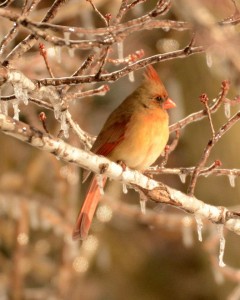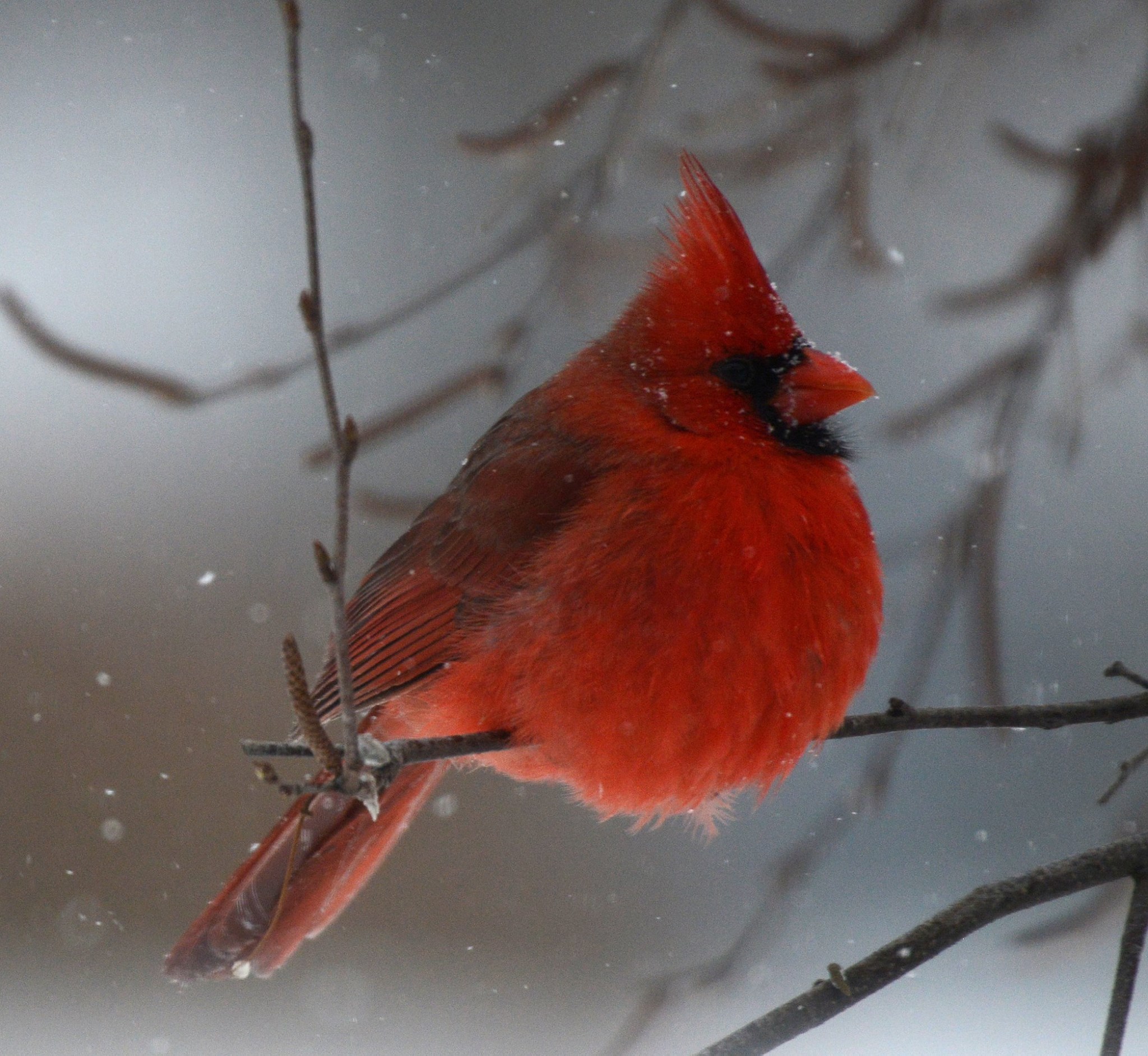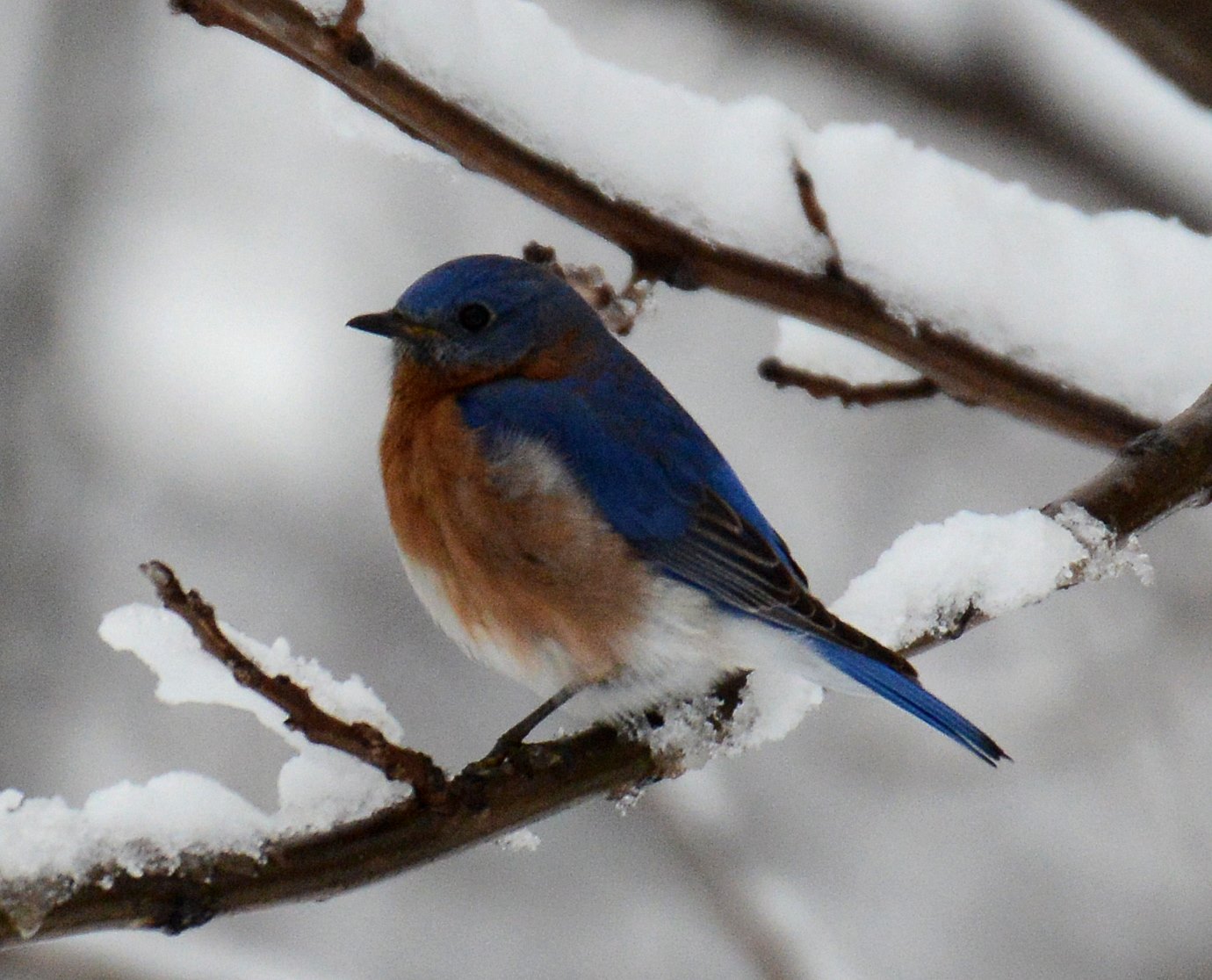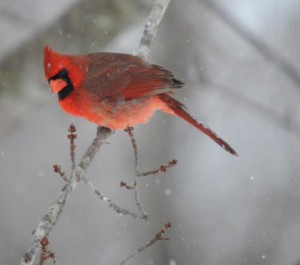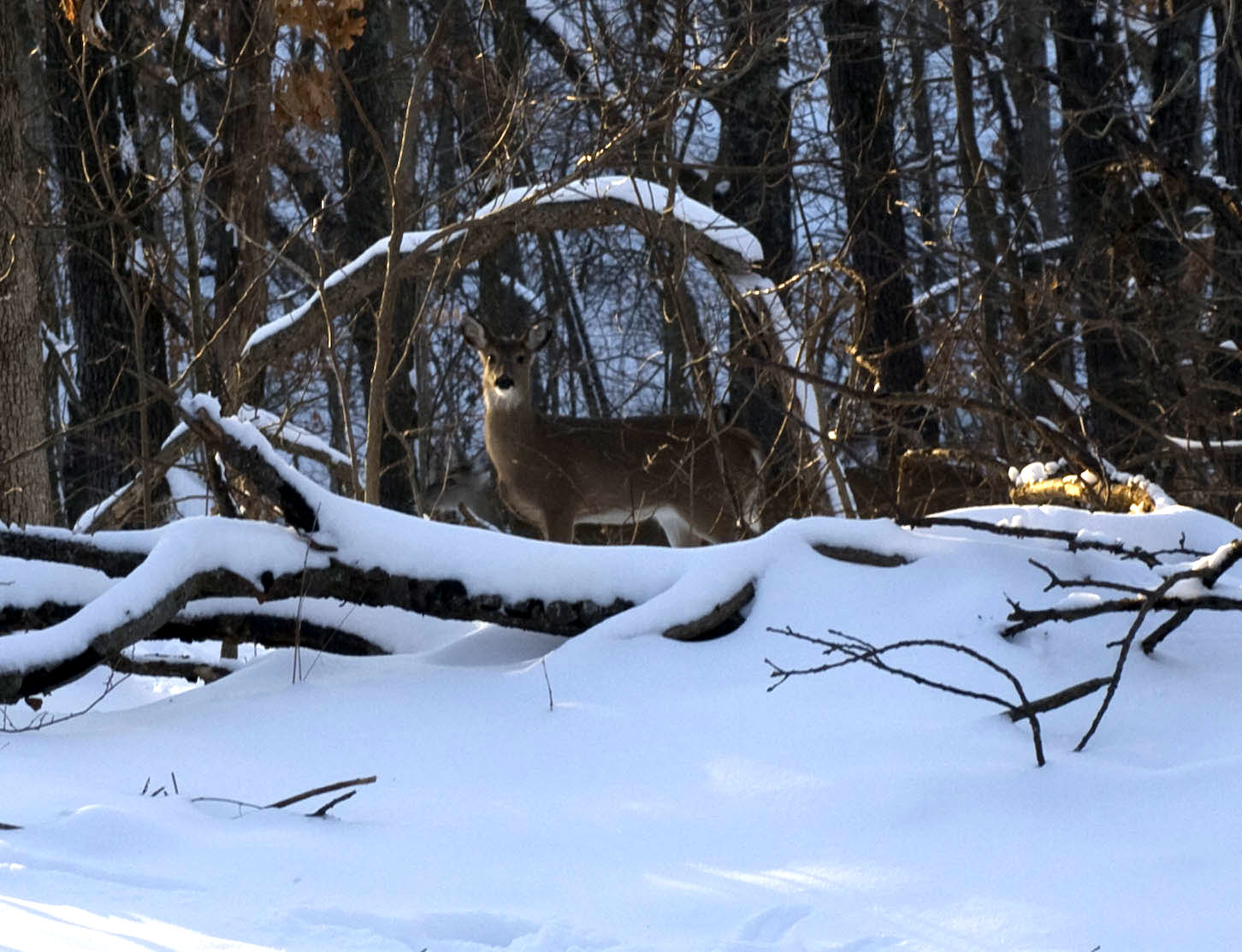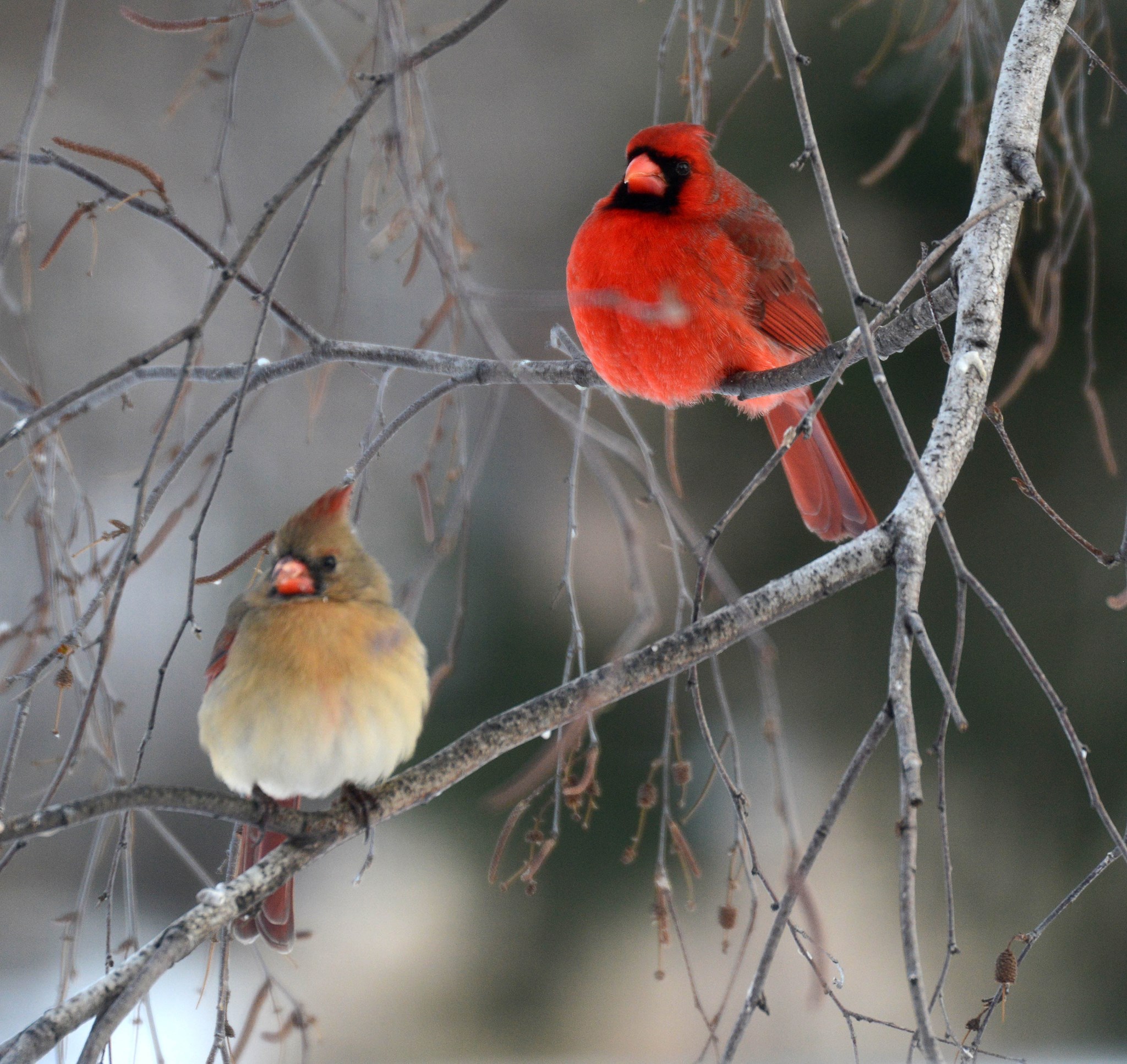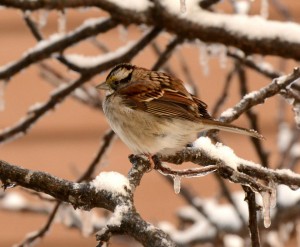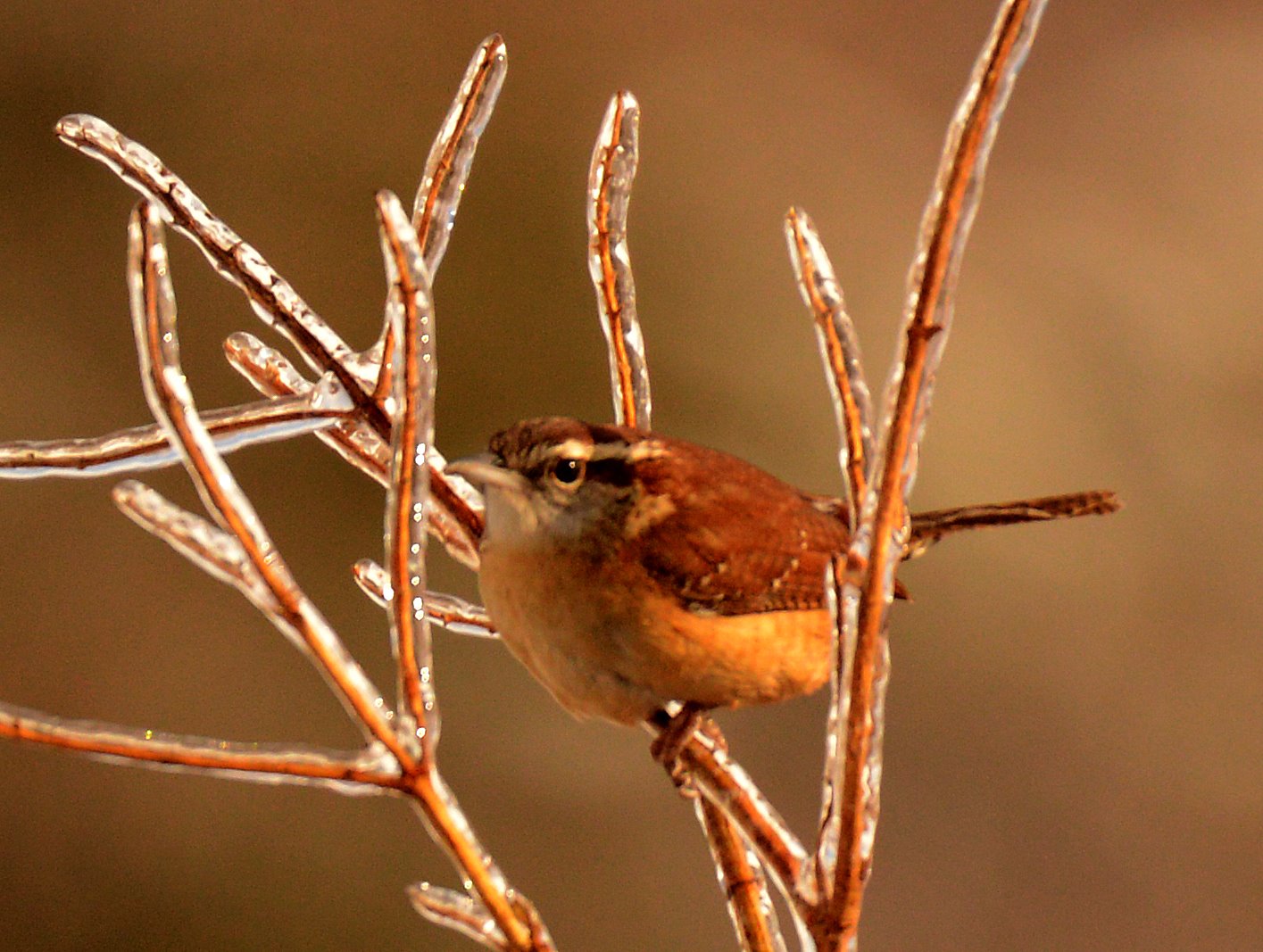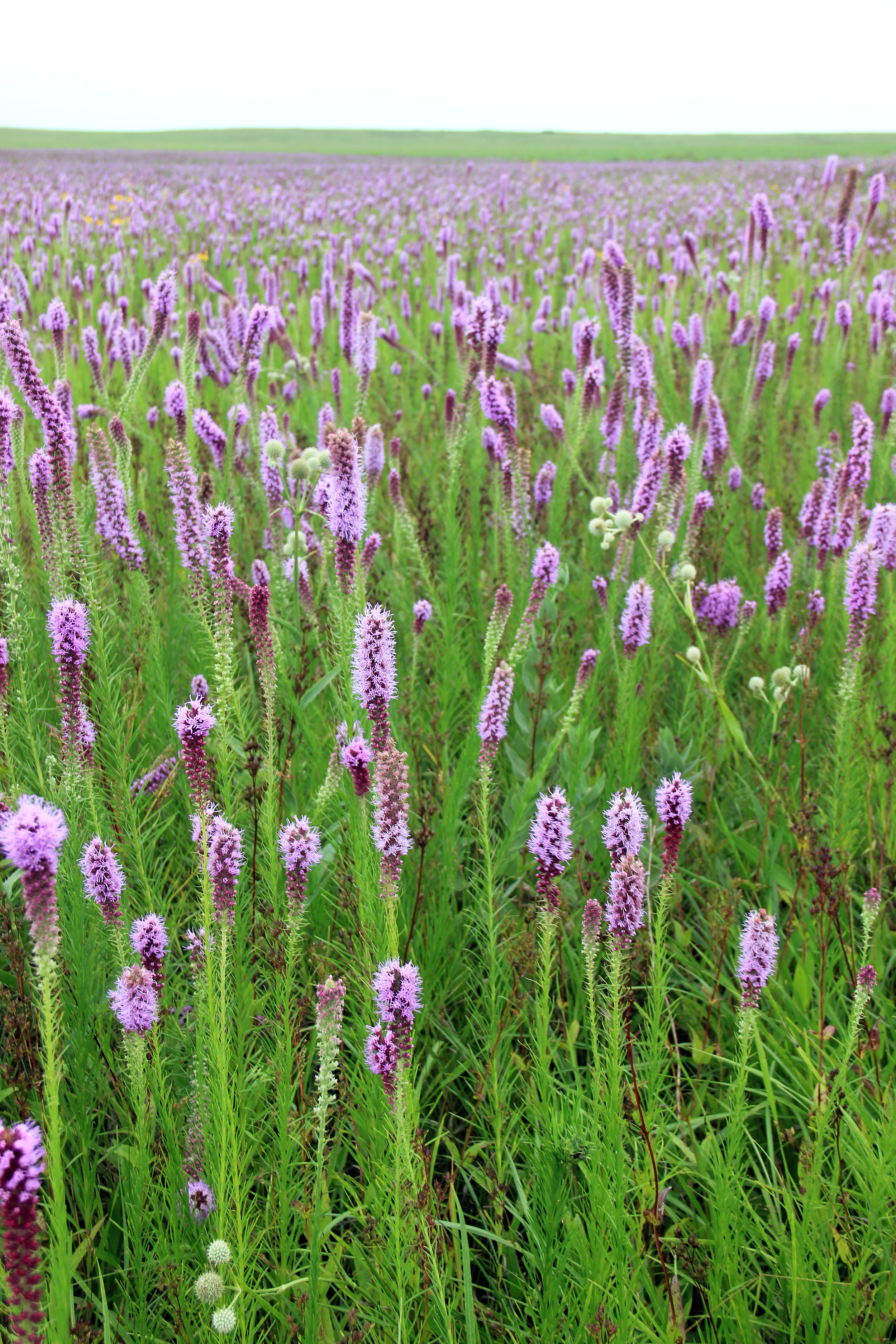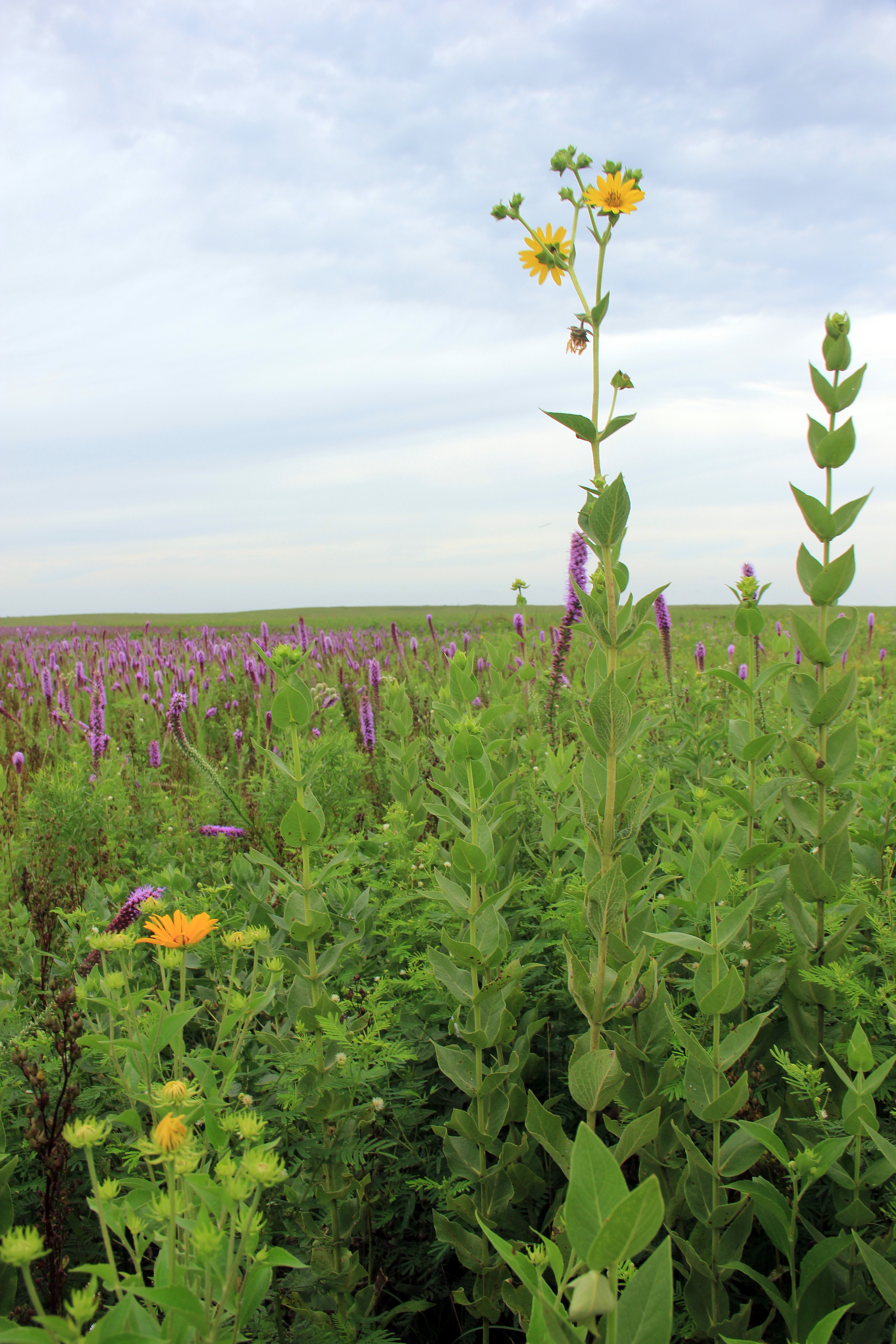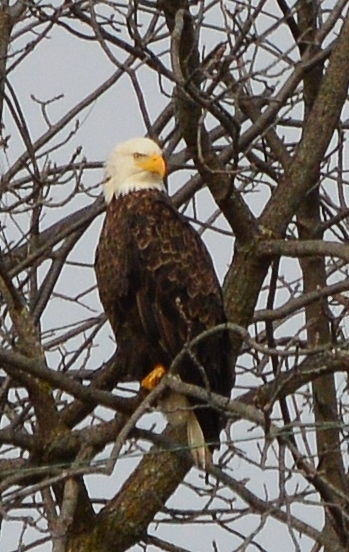Have you ever heard of a Timberdoodle Skydance?
EVENING ON THE PRAIRIE By Ann Butts
It is impossible to walk a prairie and not use some time for reflection. Sometimes rolling hills of grass, other times colors blazing, and still others mother nature’s fury on the plains. You can experience all of this on a prairie walk. Comfort in the tall swishing grass. Wonder at the color available in the wildflowers. Contrast between the wet boggy areas and dry mima mounds. The rich heritage of Missouri’s prairies includes the Osage Indians’ love and respect for this land. In the book by Robert Liebert,Osage Life and Legends, he discusses their love of the prairies that helped sustain life for them.
“The home of the Osage was a lush and nurturing land, which they loved with an almost patriotic fervor, and praised it often in their songs, stories and prayers.”
Members of the Chert Glades chapter of Missouri Master Naturalists bonded with our Osage forefathers on a recent evening walk at Coyne and Welsch prairies in southwest Missouri. Prairie walks among naturalists are full of discussion, discovery, and decompression.
We typically fan out into small groups each with a different objective. This is not planned, it occurs naturally. Some will discuss and photograph the sighting of certain plants, some will search for an endangered species, and others will simply walk with thoughtful gracefulness and observation. It is a site to behold, with the love of prairies so obvious in each person’s fervor.
Jeff Cantrell (MDC) offered this summary of the evening’s events: “Our first evening was a lengthy walk (for I was short on time to scout), hindered by some standing water while we raced the twilight. But now that I (we) know of some highway pull-offs the “valley of the blazing star” is very easy to reach. However all of the site produces wonderful discoveries every time we go out.
Some of our discoveries include lots of Wild Petunia (Ruellia), Rattlesnake Master, various forms of Rudbeckia, and sunflower species ready to take control of the grassland. My favorite was the seedbox clinging to the eroded banks.
A handful of endangered regal fritillary butterflies, monarchs, pearl crescents, red-spotted purple, wood nymph, golden byssus (a skipper species), sooty wing skipper, silver spotted skipper, cloudless sulphurs, clouded sulphur, giant swallowtail, black swallowtail, tiger swallowtail, silvery checkerspots, variegated fritillary, and several other Lepidopterans were along the walk.”
Blazing star was the hit of the evening. Many naturalists could not believe the “sea of purple” they saw, and some could not wait to get to another prairie location to see if the purple was evident there. It is this unique character of prairies, ever changing – ever the same, that draws us to them. You never know what you will find, each location seeming to have its own agenda on when certain plants will bloom.
The Osage Indians attempted to reflect the natural order of the earth in every part of their lives, with total respect for the natural world. Today’s master naturalists must have inherited that conviction from them. Our view is to respect the peace, harmony and order of nature while continually learning how to preserve and protect it. There is no better way to accomplish this than to get out there and “be present” on prairies and other natural areas to observe firsthand the amazing glory that surrounds us.
Please enjoy photos from several of our talented photographers from our evening on the prairie.
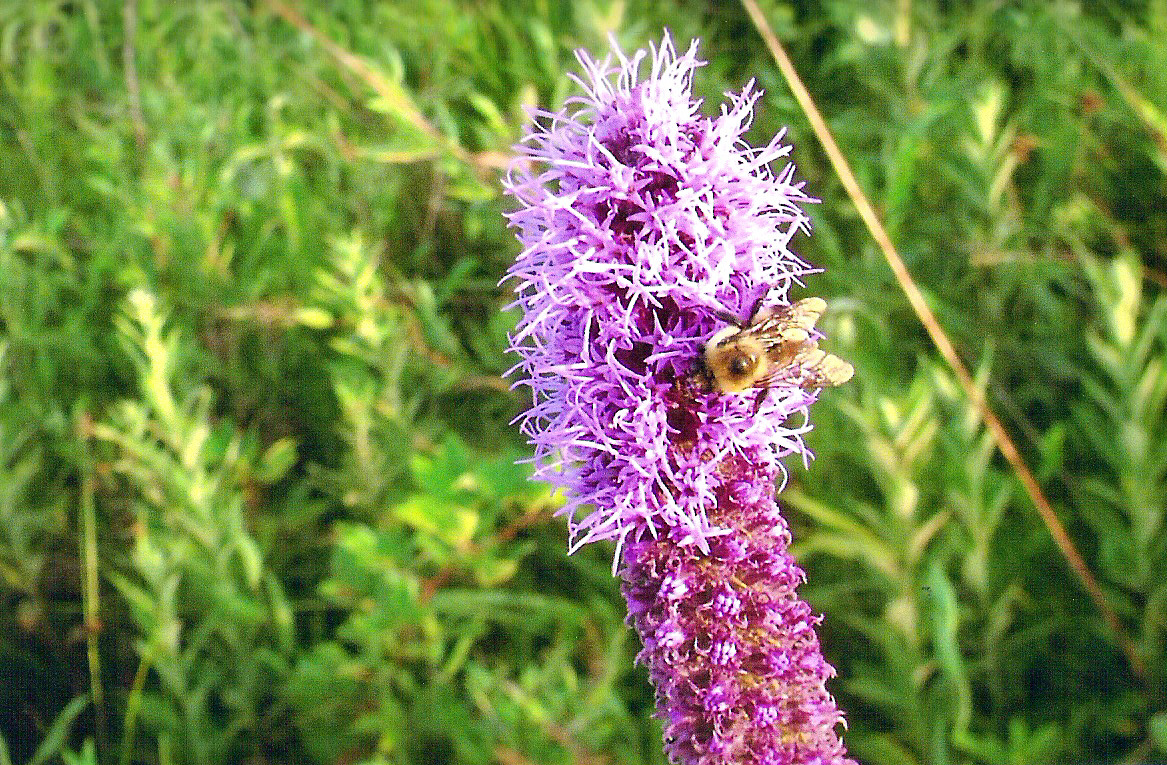

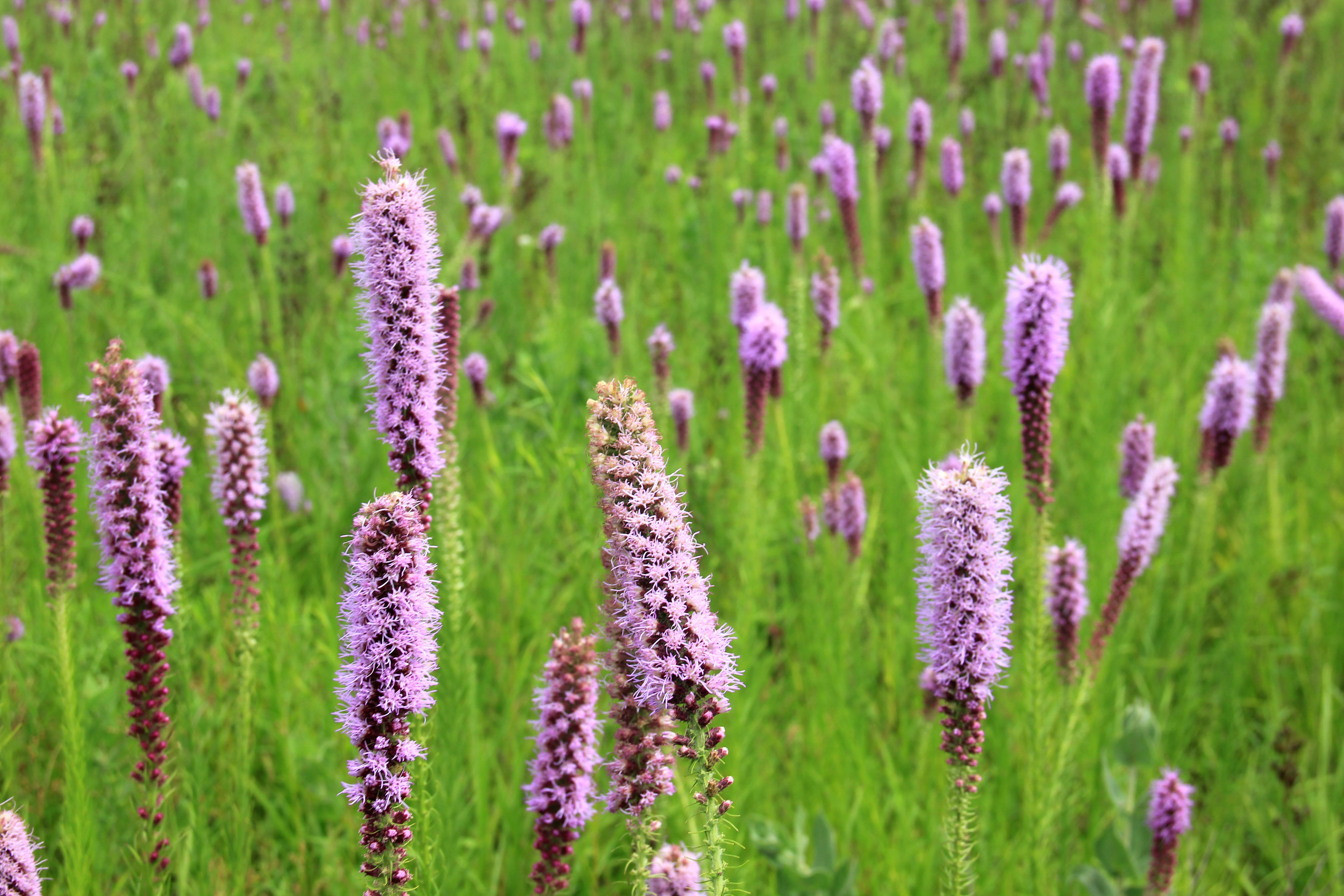
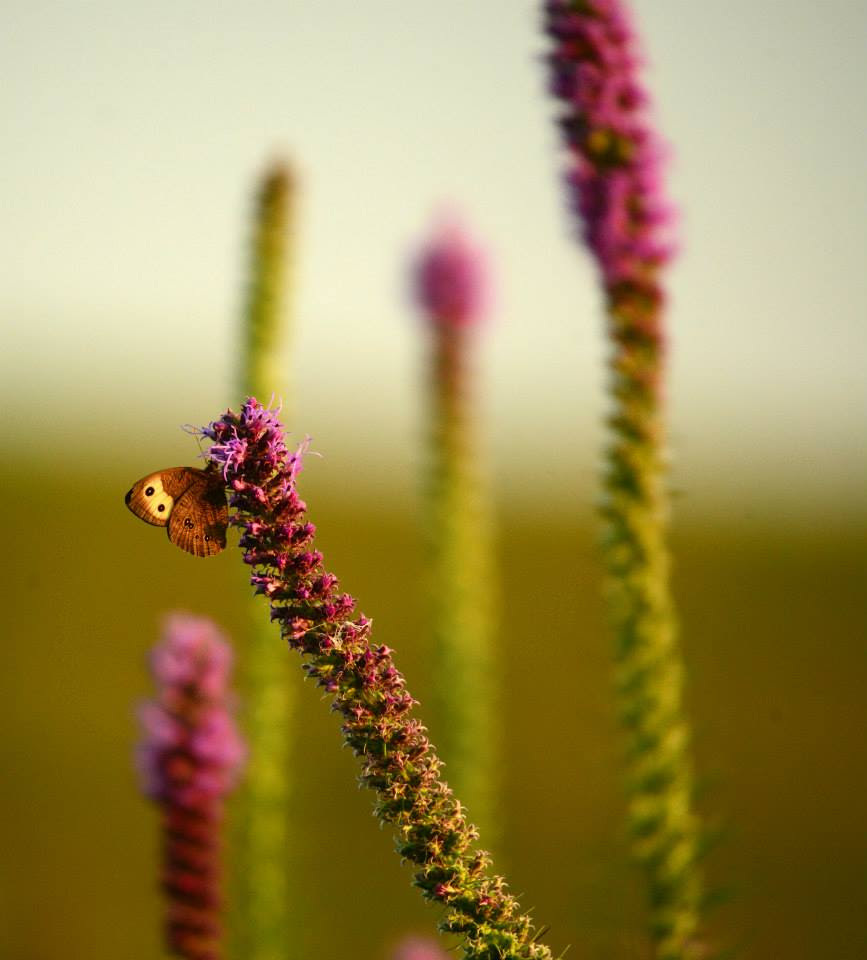
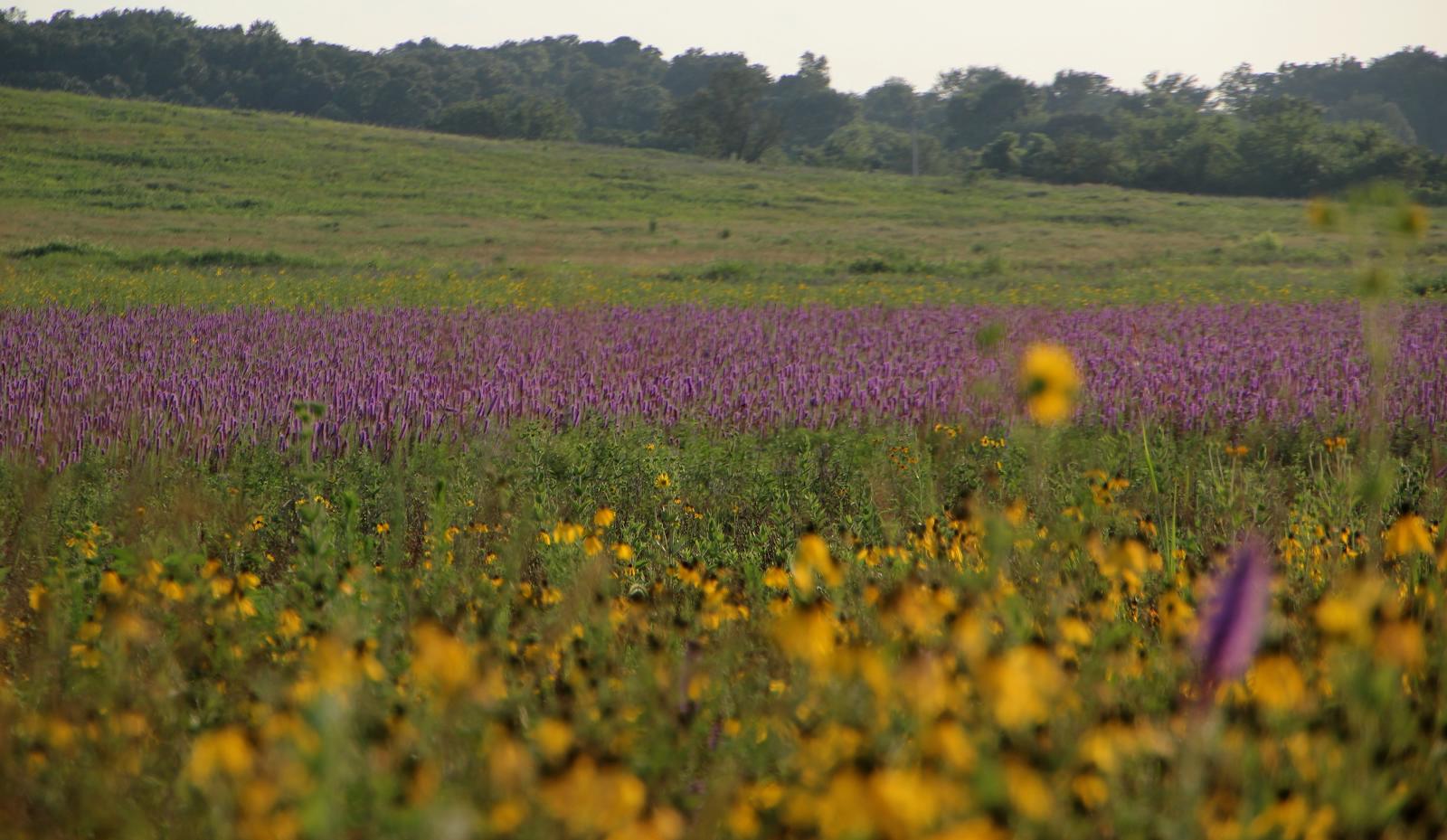
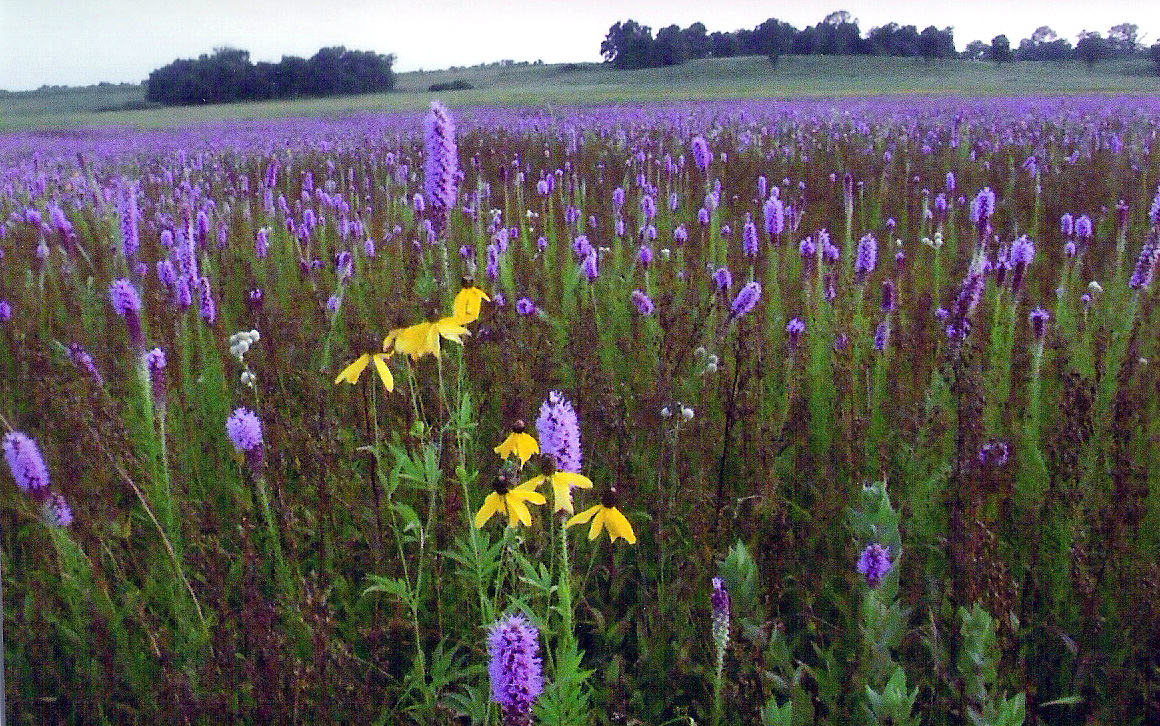
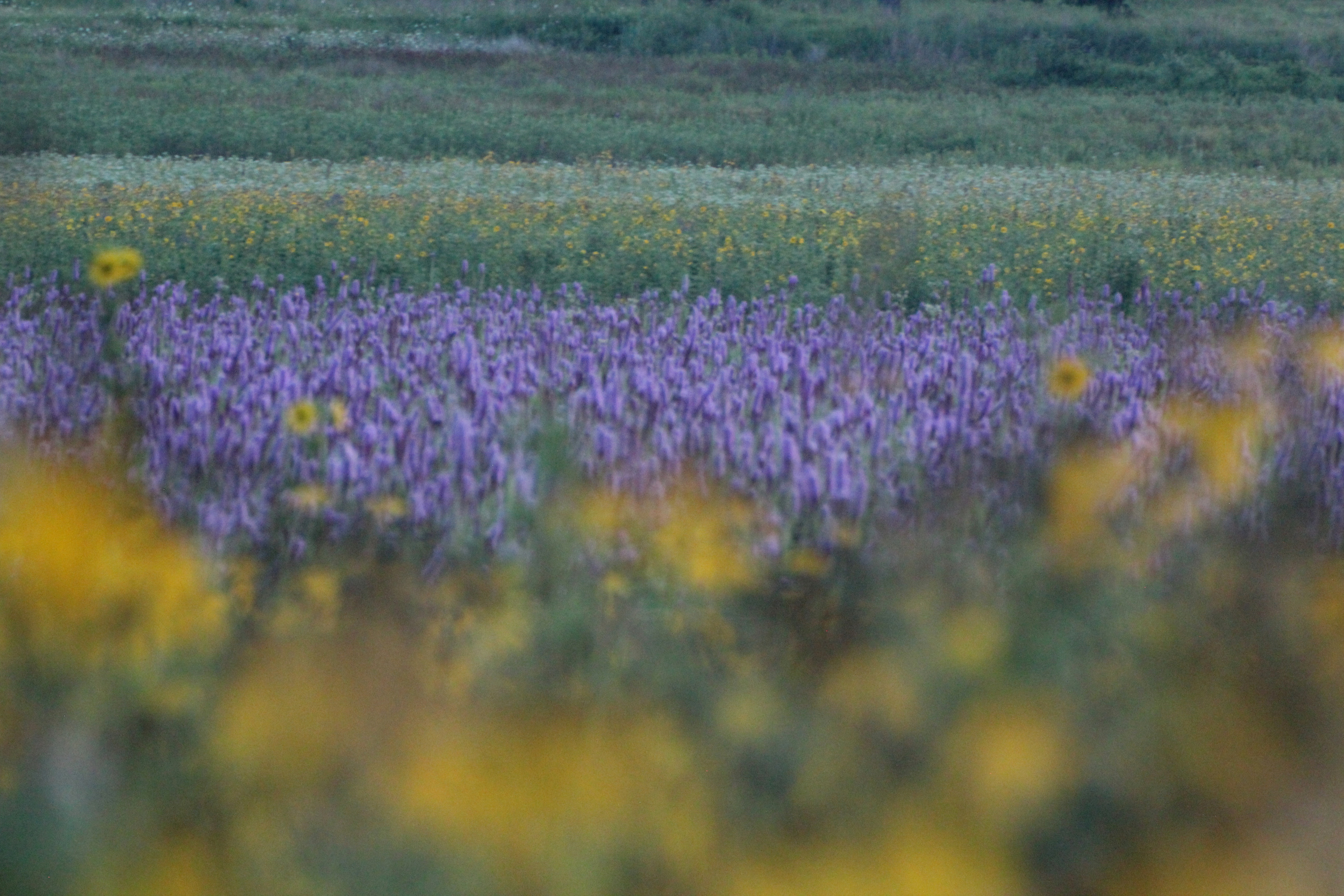
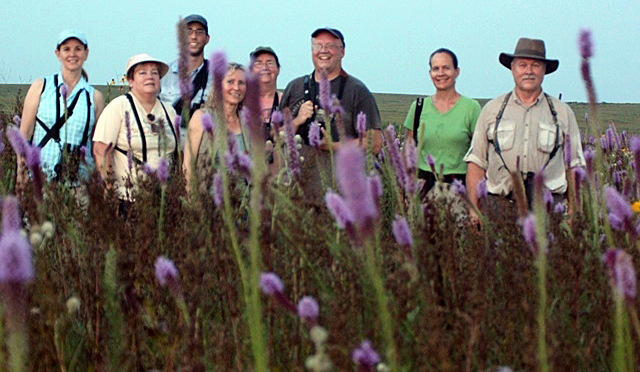
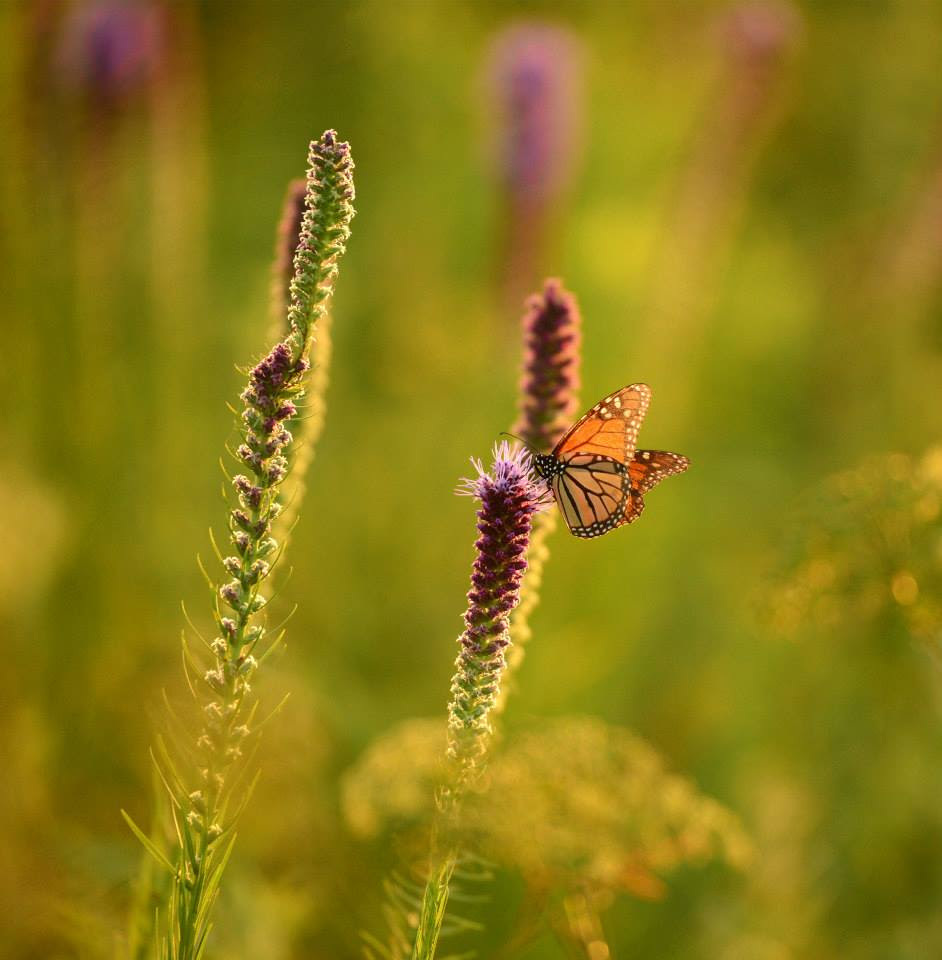
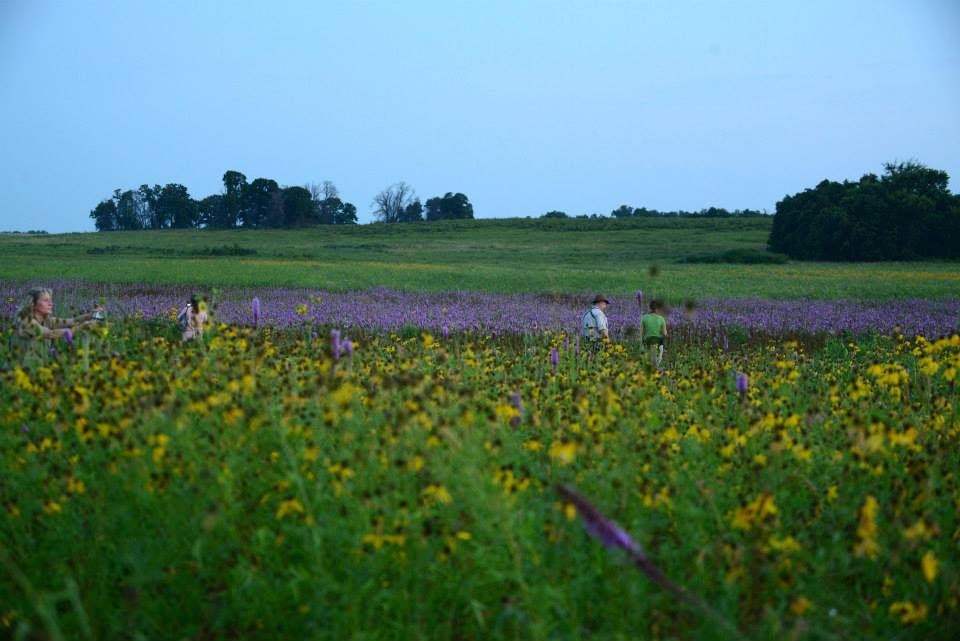
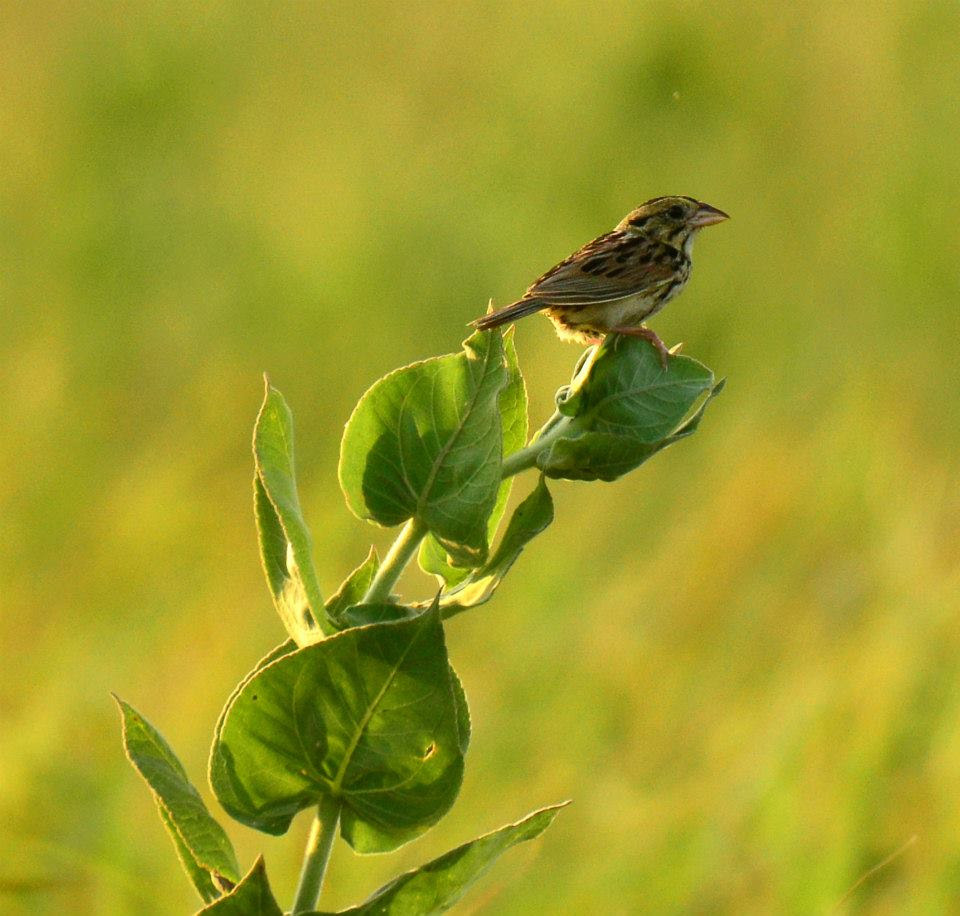

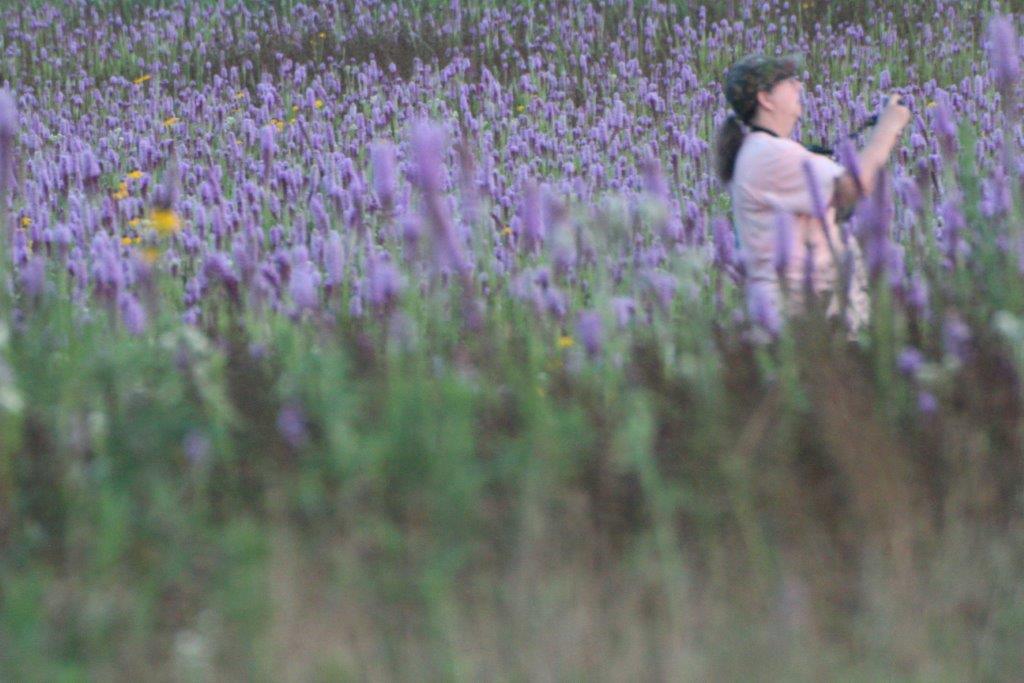
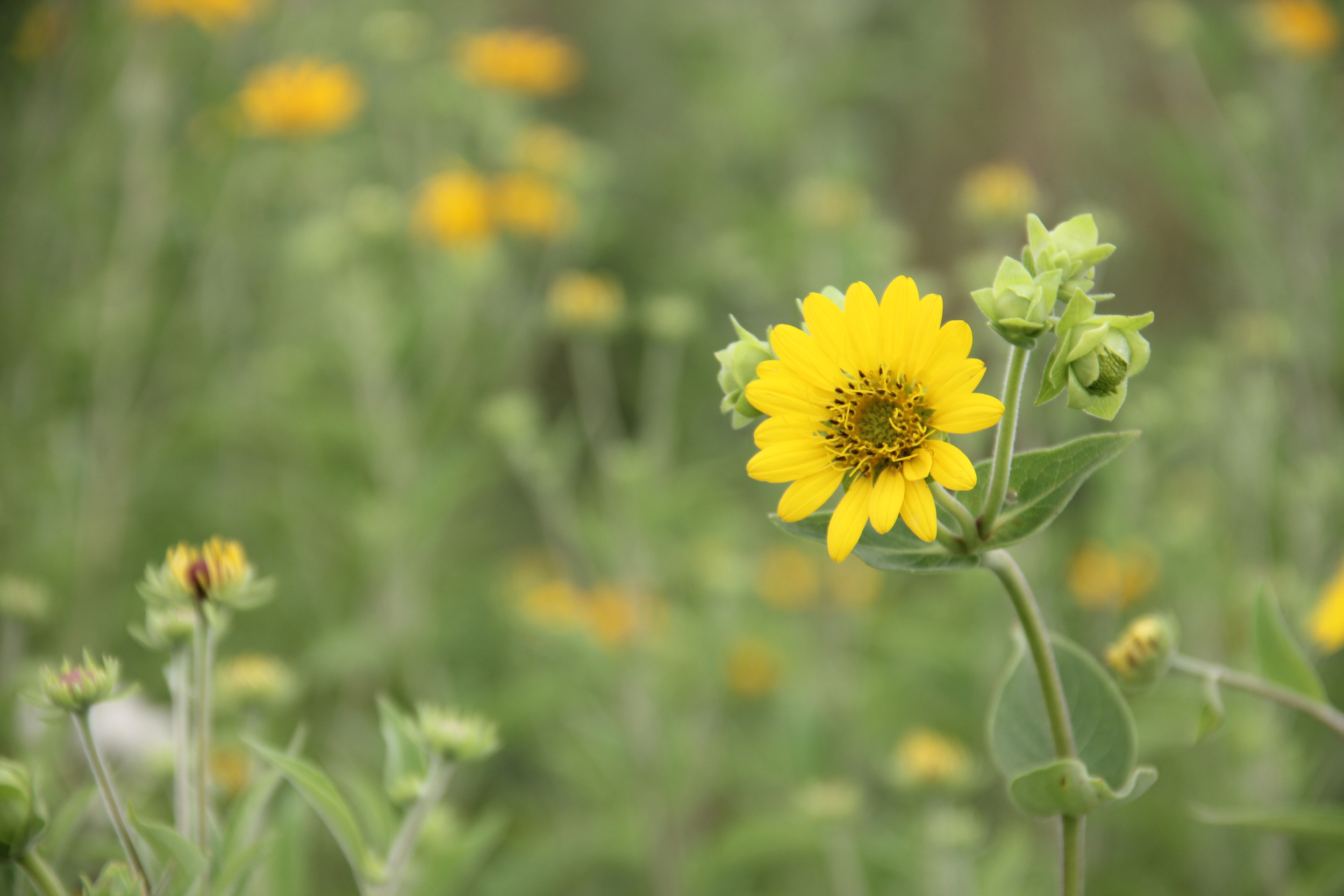
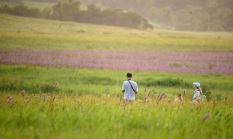
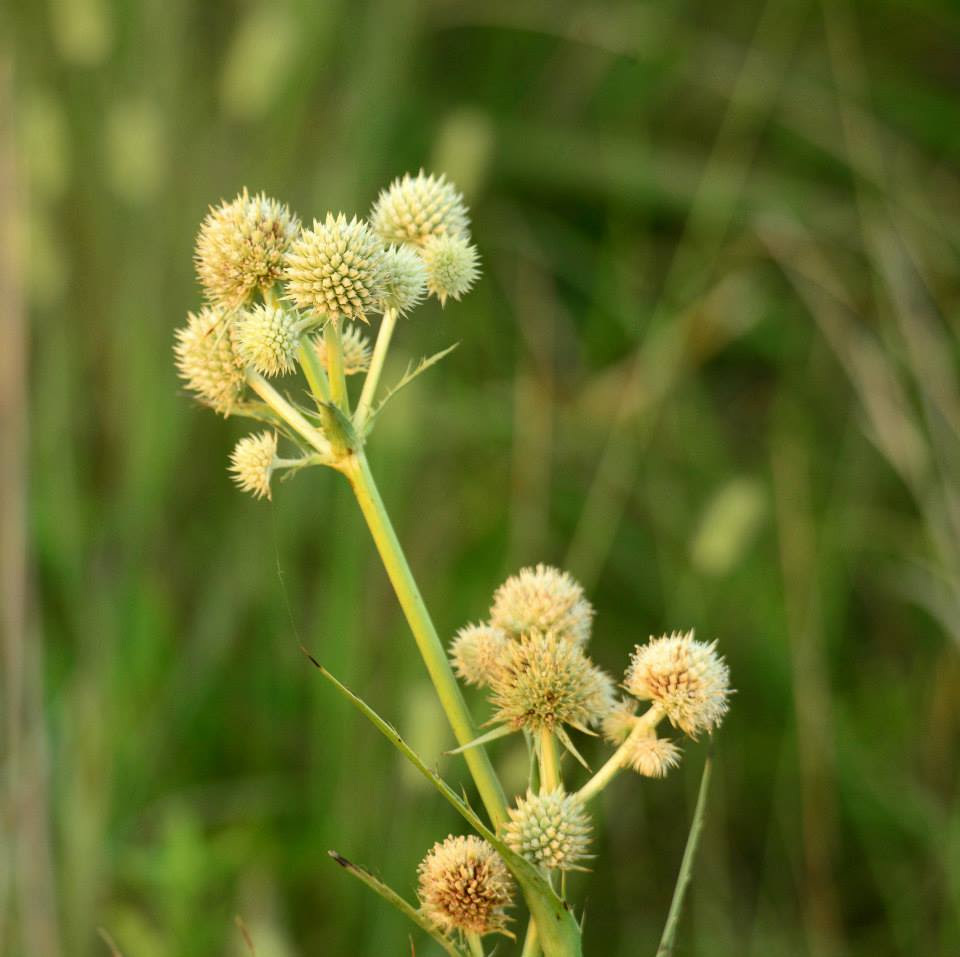
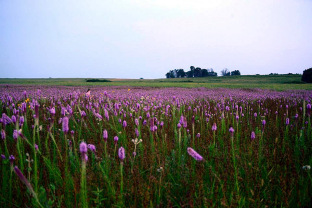
GREEN GRASS BENEATH YOUR FEET! By Ann Butts
Diamond Grove Prairie
Local prairies are full of amazing color right now so it is fitting to spend some time during the week of the summer solstice observing a local prairie. I always find time during this week to visit some prairies because they are at their peak of blooming.
““I was raised on county sunshine, green grass beneath my feet.
Running through fields of daisies, wading through the creek.””
I was not raised in the country; I grew up in suburban St. Louis. But that did not stop me from seeking out any tiny patch of green grass, fields of flowers, or a creek to wade in when I was young. Summer was an endless time of staying outdoors hours at a time, exploring natural places, and searching for anything wild; turtles, snakes, bugs, and lots of dirt.
At a young age I was fascinated with wildflowers. Not yet acquiring my “naturalist mentality” I picked some every day and had vases of flowers all over the house. Today, I find it more satisfying to leave the flowers there for everyone to enjoy, and assure they can reseed for the next season.
Coreopsis
My favorite prairie, Diamond Grove, dressed itself in my favorite color, yellow, for the first day of summer. Purple headed sneeze-weed, cownbeard, black eyed susans, and coreopsis created a yellow carpet wonderland for butterflies, dragonflies and birds.
Indian Paint Brush
Poppy Mallow
Contrasting colors came from bright red-orange Indian paint brush, blue spider-wort, and pink sensitive brier. Hard to find milkwort, wild petunia, and Deptford pinks shyly hid in the under-story of the tall grasses.
My second favorite prairie, Linden Prairie, was ablaze with color. Dark pink poppy mallow waved above the tall grasses, gray-headed cone flowers delicately shifted their heads in the wind, and bright yellow ox-eye sunflowers beamed in the sunlight.
At Linden Prairie, I recorded eight species of butterflies and two types of dragonflies while listening to dickcissels and many other birds call from one end of the prairie to the other. I had the whole prairie to myself, which was both wonderful and sad at the same time. Sad because others were missing what I got to enjoy.
Wood nymph butterfly
Many cultures observe the summer solstice as a turning point in the year. On the prairie, it is also a turning point. It is the beginning of the end as wildflowers are at their peak and we begin to observe the seeds of summer’s end. So get out there and absorb some country sunshine and get some green grass beneath your feet on a local prairie. You will be better for it!
Ann Butts has been a member of Chert Glades Master Naturalists since 2005. Preserving wildflowers and prairies are high on her list of worthwhile Missouri projects. “My goal, through my photography, writing, and volunteerism is to help people think about nature, learn about nature, and respect nature.”
Hidden Signs of Spring by Kevin Mouser
The spring colors are on the way! Trees are showing signs of life with buds getting green, birds are returning from vacations in the Southern Hemisphere, and the peepers are keeping us up at night with their mating calls from any little wet area near our houses. These are all clear signs of spring. Many of us spend the better part of February and March repeating a mantra of “spring is just around the corner.” When we gather with our friends, neighbors, loved ones and fellow employees the conversation often turns to signs of spring. There is one sign of spring that many of us don’t even know about even though we drive past it, or over it, every day.
Every spring, as the cycles of light change, and the water begins to flow a little more regularly; the streams of the Ozarks begin to color up. The color comes in the forms of red, blue, and green scales on small, unknown fishes. Not unlike the migration of the birds back to our forests, the fish regain their color for spring breeding on their own time schedule. Some of them like to breed early, when only the most die-hard fish-head would consider going into a stream to look for them. Some, not unlike most of us, enjoy the warmth of a late spring day to strut our stuff. With the exception of a few of the dry or hot months of the late summer or fall, there is almost always a fish in breeding colors in Missouri.
Here in the deepest of Southwest Missouri we have several species of darter, a bottom dwelling, small fish that loves to dress to impress in the early spring. The male orange throat darter sports a beautiful combination of red and blue in his fins. These guys can be so colorful that is possible to see their colors from the shore. If you want to see one though you will have to look in the cool spring fed waters that they prefer. Greenside and banded darters both sport a coat of emerald green when they are trying to attract the attention of the ladies. You will find both of these in bigger streams like Shoal Creek, and around vegetation where their brilliant green isn’t quite so obvious. Stippled darters are a less common, but beautiful species of our small creeks. Like the orang throat darters they prefer the small springs and cool waters. They spend much of their time around vegetation. When they are trying to attract a mate they sport a bright orange belly, while the rest of the body turns very dark. They are quite the little gem to pull out of a mass of submerged weeds. These are just a few of the colorful darters of Southwest Missouri.
Spring is on the way. The darters know it, the robins know it and judging by the number of times I have glanced out the window longingly as I write this, I know it too. Brave the cold and rain a bit and get outside and welcome it. If bravery is calling your name, maybe you will even put on a pair of rubber boots and go look for some hidden signs of spring in your local streams. However you want to greet spring, please take the time to leave it a little better than you found it.
Kevin Mouser is a member of the Chert Glades Master Naturalist Chapter. He is the Special Education Science teacher, Ecology teacher and Science Club sponsor at East Newton High School. When he is not teaching, driving a school bus or sleeping, he really enjoys spending time with his wonderful wife Cristal and getting into the great waters of the Missouri Ozarks.
Photography by Kevin Mouser and Becky Wylie
- See more at: http://chertglades.org/?p=2165#sthash.yyaCUYwK.dpuf
The Timberdoodle, A Dancer Before the Stars by Jeff Cantrell
Have you ever heard of a Timberdoodle Skydance?
Trees in Winter by Katharine Spigarelli
I love trees. Call me a “tree hugger” and I’ll take it as a compliment. It’s a label I wear proudly. So, tree watching is a pastime that occupies my time as I walk, drive, or just sit in the backyard. What might be surprising to many people is that one of my favorite times of year to “watch” trees is winter. I know, you’re thinking “What?!!!” When most people think of trees in winter, they think of drab, gray, and unpleasing.
When asked which season has the most beautiful trees, most people would probably respond that autumn trees are their favorite. It’s hard not to love trees in autumn. Their colors are beautiful and warm and are the subject of artwork and photography. I love trees in autumn. In springtime, seeing the buds emerge on trees and the freshness of the newly formed leaves is always exciting. We all love the beautiful greens of spring trees and the blossoms on dogwoods, redbuds, and other flowering trees that come with the warming temperatures of spring. I love trees in spring.
In summer, we are thankful for the shade of trees that provides us relief from the heat and reprieve from the blazing sun. The coolness of a tree lined hiking path or a shady backyard are wonderful gifts in summertime. I love trees in summer.
But, what, you ask, do winter trees have to offer? Winter trees allow you to see their potential. For me, one of the things I enjoy most when driving is looking at trees. You can see their trunks and limbs. It’s interesting to see the forms they have. I sometimes look at them and think of how they are like people. Some are long and slender. You can imagine them modeling hiking clothes. They look like they must always be on the go, never sitting around being lazy. Some are full and squatty and seem to be vertically challenged. They offer great protection for our friends, the birds.
When you look more closely, you can often find nests that are not visible in the other seasons. Some trees appear to be perfect, just like some people. They spread their limbs both vertically and horizontally and seem to have everything you could want for a tree in your yard. Their strong limbs look ready for the treehouse or the swing and their perfect shape makes you visualize them in the front yard of any home. Some trees seem to have had a tough life, but aren’t quite ready to give it up. Some of their limbs may be gone, some are barely hanging on. Other trees seem to have let themselves go and their branches kind of stick out randomly. They show the effects of age with sagging and straggling limbs. They make me smile as I enter that stage of life.
Trees in winter allow us to better enjoy the beauty of a sunrise or sunset. Seeing the colors of the sky through leafless branches enhances our enjoyment of the experience. There are few things more beautiful than a winter sunset glowing through a group of trees.
I love trees in winter because they reveal hidden treasures. Have you ever passed by a place in winter and all of a sudden you notice an old barn, homestead, tree stand, or some other mystery that you’ve never before noticed? It’s pretty exciting to find something that’s been hidden by the leaves of trees and is now revealed.
I love trees in all the seasons. But, as much as I love them all, I think I most love trees in winter. They offer a certain peacefulness and welcome contemplation and meditation. So, as you take your next long drive, put down your phone, look around, and notice the shapes, the strength, and the groupings. Enjoy
A Happy Ending With a Touch of Class By Jeff Cantrell
Field notes and photographs by J. Cantrell
I was ten and participated on my first guided hike and it just so happened to be in amazing Yellowstone. My folks are national park enthusiasts and my mom’s mission this trip was to grant her young conservationist the gift of a rare wildlife experience.
When we think of wildlife, endangered species stories frequently emerge and they have a gloom and doom undertone to them. Biologists strategize on how to reverse the decline of the population while the nature-loving communities offer support any way they can contribute. So unfortunately when the subject regarding threatened species comes up we are prepared for a grim outcome.
The trumpeter swan is the largest of North American waterfowl and surely one of the most stunning. The trumpeters to me simply symbolize all that is graceful and stylish in nature. A swimming swan resembles an ice skater’s refined glide and their reflection appears to pursue the bird on a blue or silver mirror. The adults are a crisp bright white, while the juvenile’s plumage matches the winter sky. They are a true conservation success story recovering from brutal market hunting for their skin, feathers and meat. Quill feathered pens were a favorite instrument of John James Audubon to tailor the groundwork sketches for his celebrated bird paintings. The swan feathers inflated pillows and mattresses for the aristocrats and colonists to rest well and dream of the promises of a fresh America. The trumpeter swan contributed a great deal to our pioneer heritage and we find their presence carved on furniture, printed on currency notes, in Native American culture, and much more.
They emerge from a population less than 70 trumpeters in all of Canada and the lower 48. They rode the conservation/preservation wave of early conservation laws and the collapse of plume hunters and feather fashions. Heroes like Teddy Roosevelt, George Melendez Wright and William Hornaday were in their corner. Today, our area benefits from captive conservation breeding flocks of Iowa, Minnesota and Wisconsin. It is fortunate the birds don’t recognize state borders and so we benefit from trumpeter swans vacationing here during the winter. After being completely absent, I have now witnessed them steadily increase in our area every single winter these past 20 years. Their occurrence restores their place in our culture and history; they certainly glide across our view with a wonderful sense of style. The story of the trumpeter swan is a real conservation story. I love happy endings especially when they have a touch of class.
I look forward to seeing you on the trail. – Jeff
FESTIVAL OF EAGLES – STELLA MISSOURI
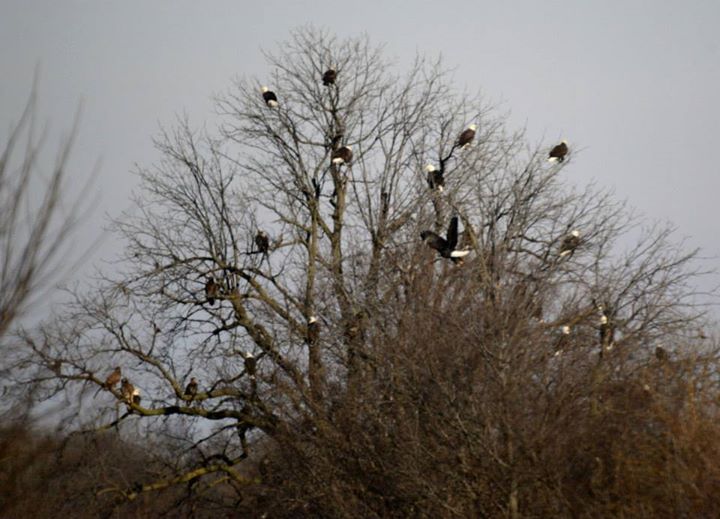



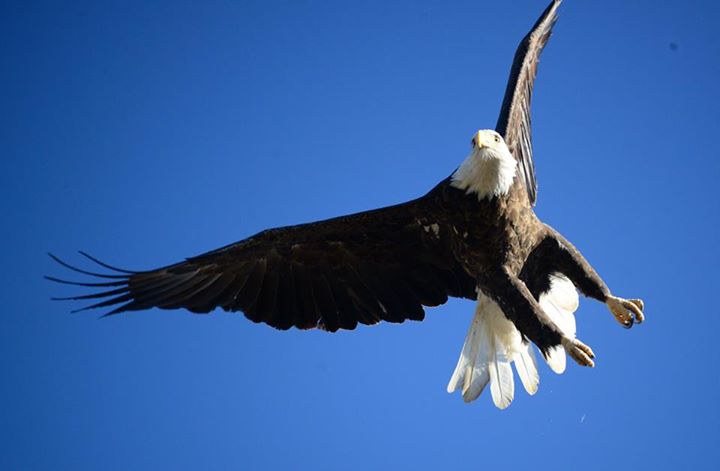
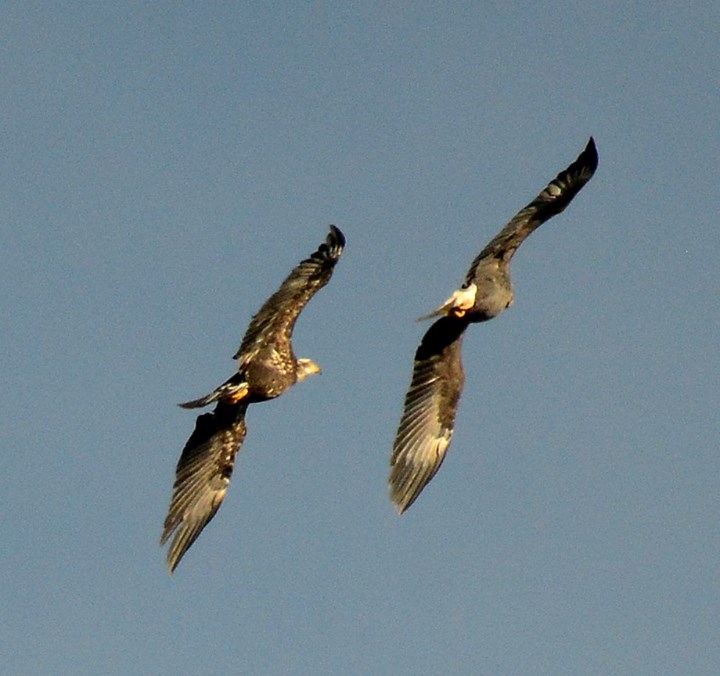

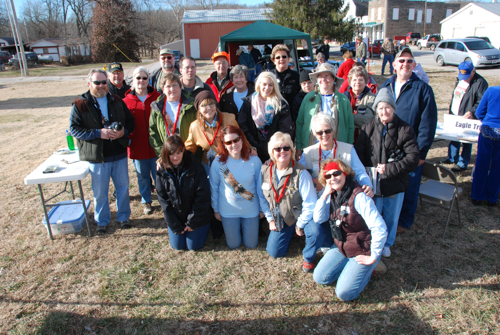
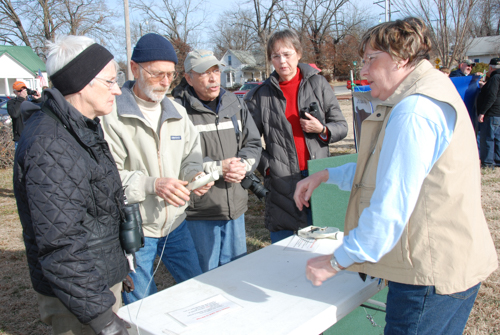

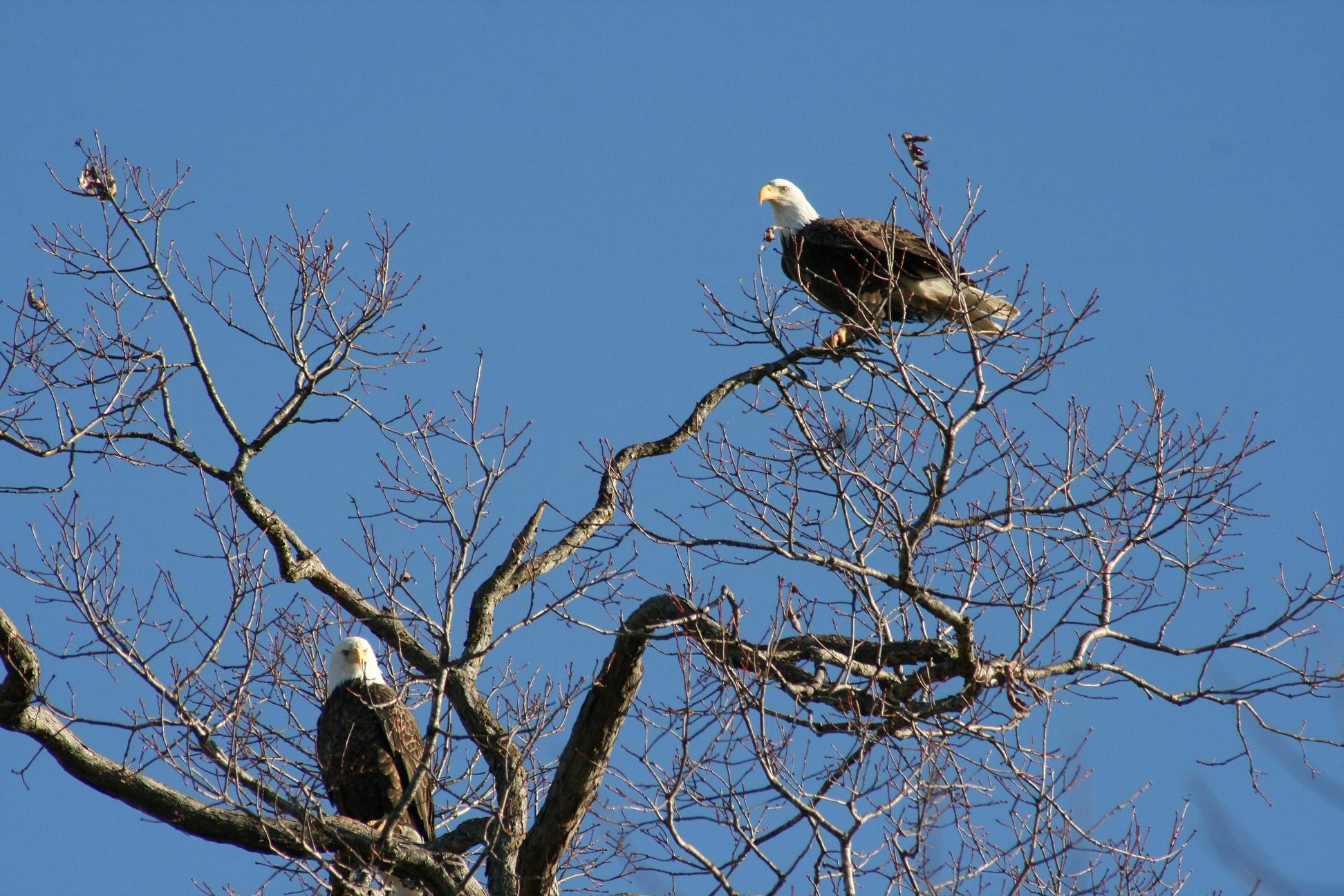

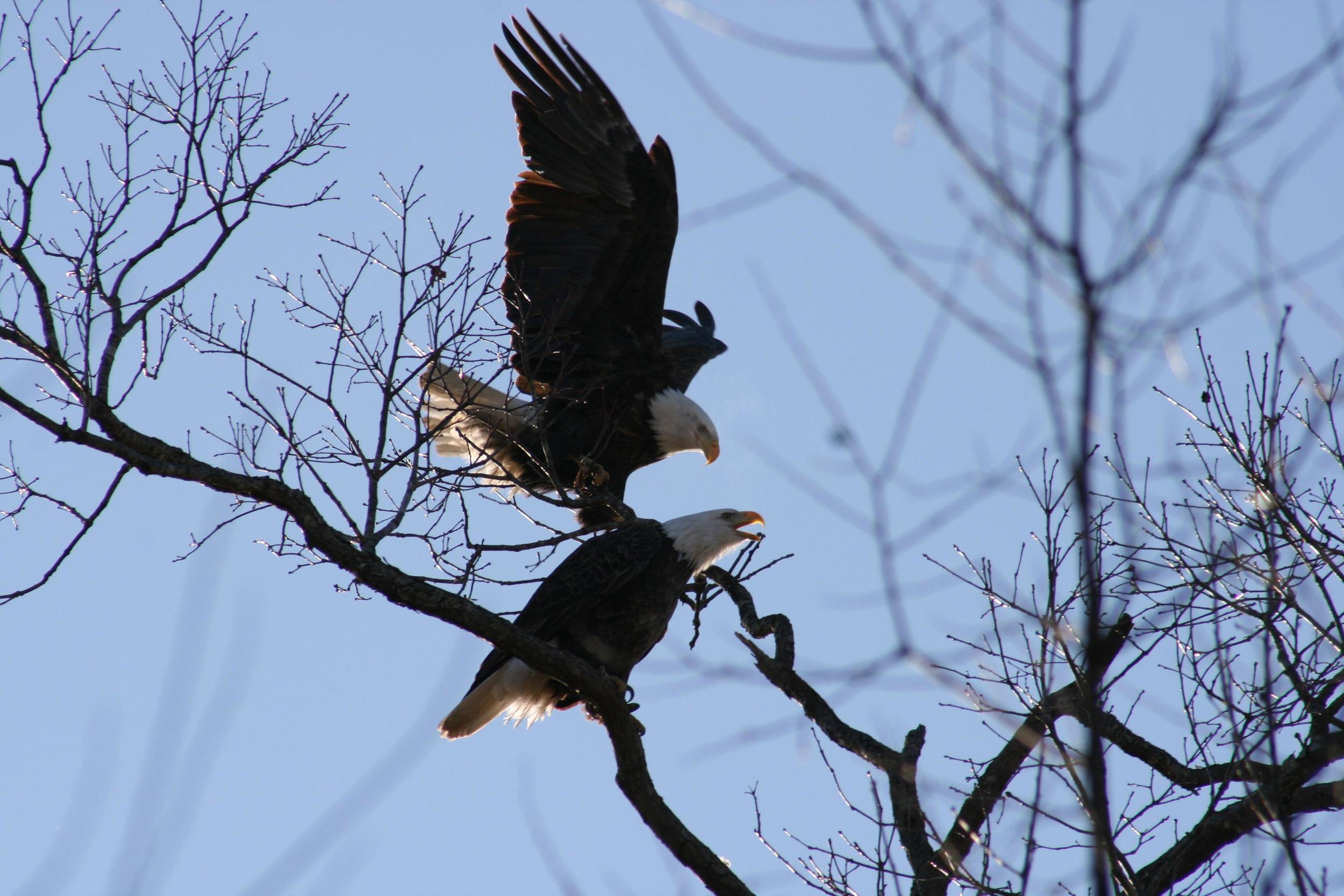



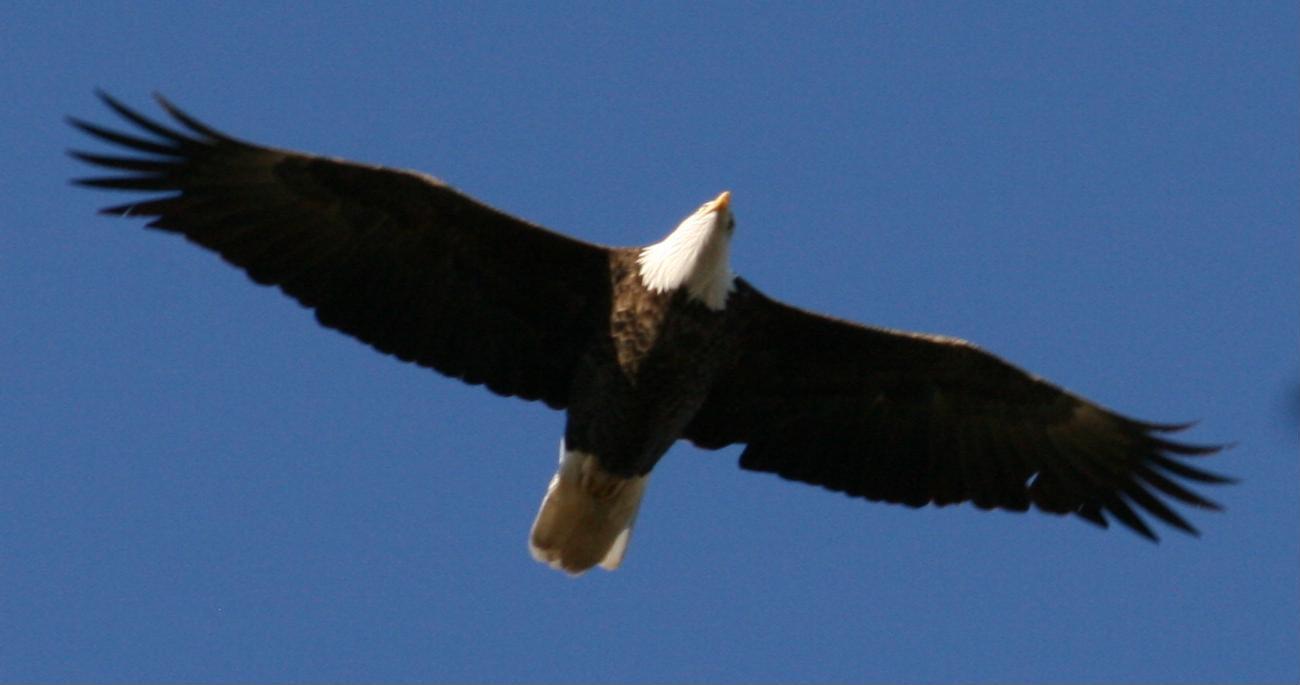

It’s that time of year again — time to view the eagles at Stella. The Chert Glades Master Naturalists will be hosting the Festival of Eagles on Saturday, January 24, 2015 at Stella, Missouri. Activities begin at 10:00 a.m. and go until 3:00 p.m. There will be scopes set up for getting up close and personal views of the eagles who visit Stella every year.
Representatives from the Missouri Department of Conservation and Missouri Master Naturalists will be available for answering questions. There will be a life-sized eagle nest replica, a life-sized eagle wingspread to compare your “wing span” to that of an eagle, face painting, and more. Volunteers will be scouting the area for good viewing opportunities and maps will be available to help you get the best views. Every year the town of Stella has some goodies available for those who visit. There will be hot coffee, hot cocoa, and baked goodies available at the Methodist Church.
For directions to Stella, you can check mapquest or google maps. Here are simplified directions: from Joplin, take I 49 south to Neosho, exit 24 (US 60). Turn left. Go 1.3 miles. Turn righ on I 49 BUS/MO 59/US 71 BUS S. Go 1.3 miles. Turn left on Lyon Dr. Go 1.5 miles. Turn right on Doniphan, go .8 miles. The road will curve left and become Hwy. D. Go 10.6 miles. Turn left onto Hwy. A. Go .8 miles and you will be in Stella. The activities will be located at the city park on the corner of Carter & Ozark streets.
So, come join us for a day of fun in the great outdoors. Dress for the weather, bring your camera and binoculars, if you have them, but mostly just come to enjoy the day. It’s a great opportunity to spend time with your family, learning about one of the great successes of conservation.
In winter, Missouri is a leading migratory stop for Bald Eagles, and Stella is a great place to see them!
Bald Eagle recovery is a spectacular conservation success story!
- 1782 – Adopted as national symbol; 100,000 nests (est)
- 1800’s(early) – Nesting eagles common in Missouri
- 1900 – Numbers declining; eagles shot on sight to protect livestock; no Missouri nests
- 1940 – In danger of extinction; Bald Eagle Protection Act makes harming, possessing or harassing illegal
- 1962 – U.S. nesting pairs dwindle to about 400; Silent Spring(Rachel Carson) is published linking the pesticide DDT to thinning eggs that break during incubation or otherwise fail to hatch
- 1972 – DDT banned
- 1978 – Listed as “endangered” under the Endangered Species Act(ESA)
- 1983 – First report of re-nesting in Missouri
- 1995 – Status upgraded to “threatened” (ESA)
- 2007 – Bald Eagles completely de-listed (ESA)
- 2007-present – More than 2000 Bald Eagles winter in Missouri with 200-300 nesting pairs!
Photography: Kevin Mouser, Ken Middick, Katharine Spigarelli, Becky Wylie
Eagle facts: Val Frankoski
- See more at: http://chertglades.org/?p=2012#sthash.0RqA0N1a.dpuf
GET RID OF THE WINTER BLAHS By Ann Butts
If you are not careful, you’ll catch the winter blahs. You know them, muscle aches, headaches, fatigue, and STRESS! It’s not the flu, but it is a sickness. Some people call it cabin fever, some use technical terms like Seasonal Affective Disorder. I call it TOO MUCH TIME INDOORS! But there is a cure. Take a nature walk. Get outside, regardless of the weather. Even fifteen minutes outside can cure the winter blahs. You will feel better.
Studies have shown that just being outdoors contributes to overall good health. There are two kinds of benefits from getting outdoors. The first is improvement in your cognitive thinking; clear your mind so you can think. The second is an improvement in your mood. A side effect is improvement in physical health. Observing nature takes your mind off your troubles and relieves your stress.
There is a lot to see if you know where to look. Even on an icy, rainy day, you can find treasures. In a park, along a walking trail, or in your back yard, there are winter wonders waiting for you to discover. Droplets forming on limbs, bright blue seeds on a green cedar tree, and birds at your feeders.
Walk along a stream and just listen to the soft rushing of the water. Observe ducks or geese in a pond, they can be fun and hilarious to watch. Get far away from civilization and listen to the sounds of nature in winter. A night time hike will open your eyes to the beauty and sounds of the night skies.
Winter walks can be so peaceful! It will restore you!
Studies have also shown that looking at pictures of natural scenes, while not the same as being there, can have calming affects. Enjoy this slideshow of pictures from members of our chapter who have been outside this winter, then make a commitment to getting outside to improve your physical fitness relieve your stress, and get rid of the winter BLAHS!

